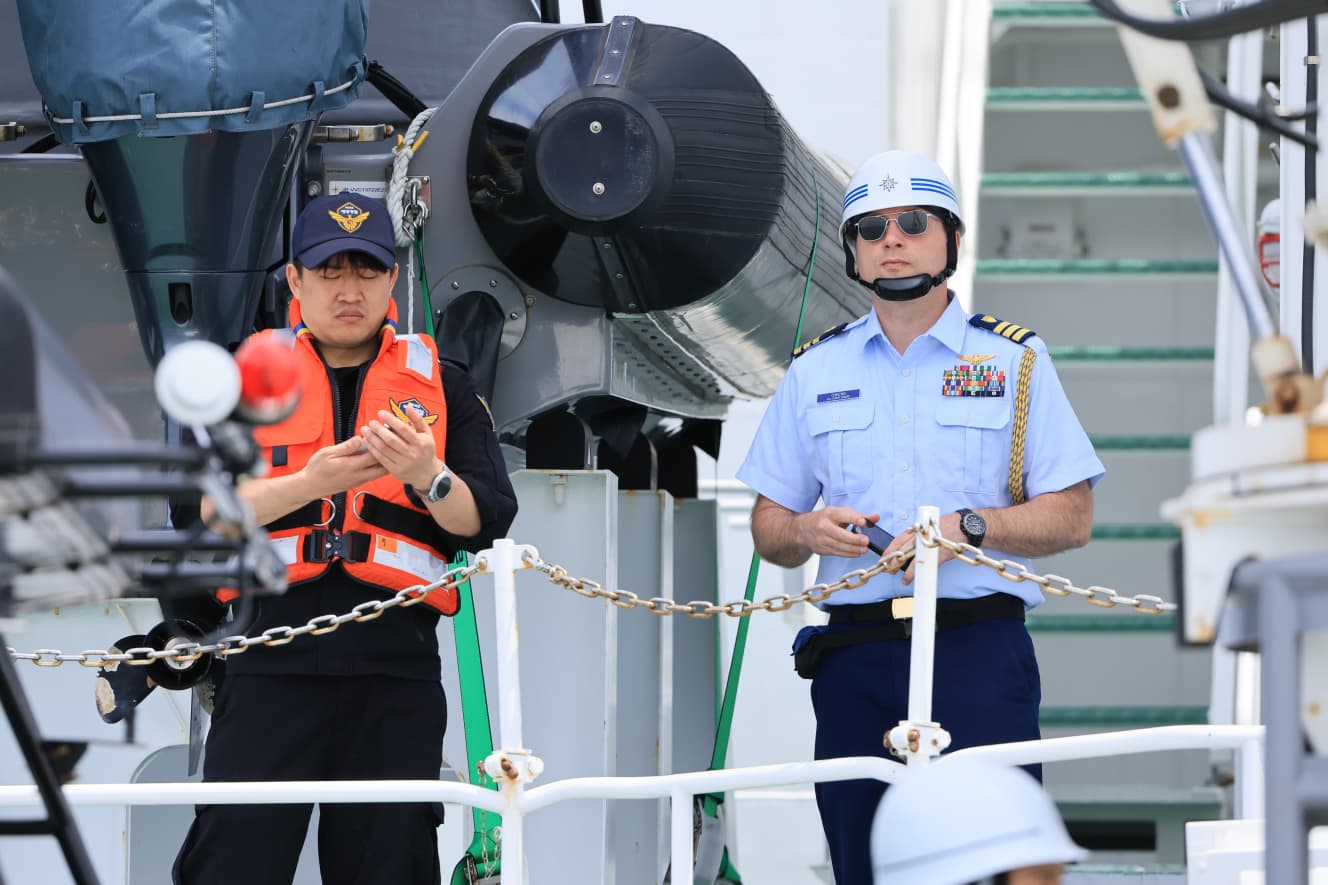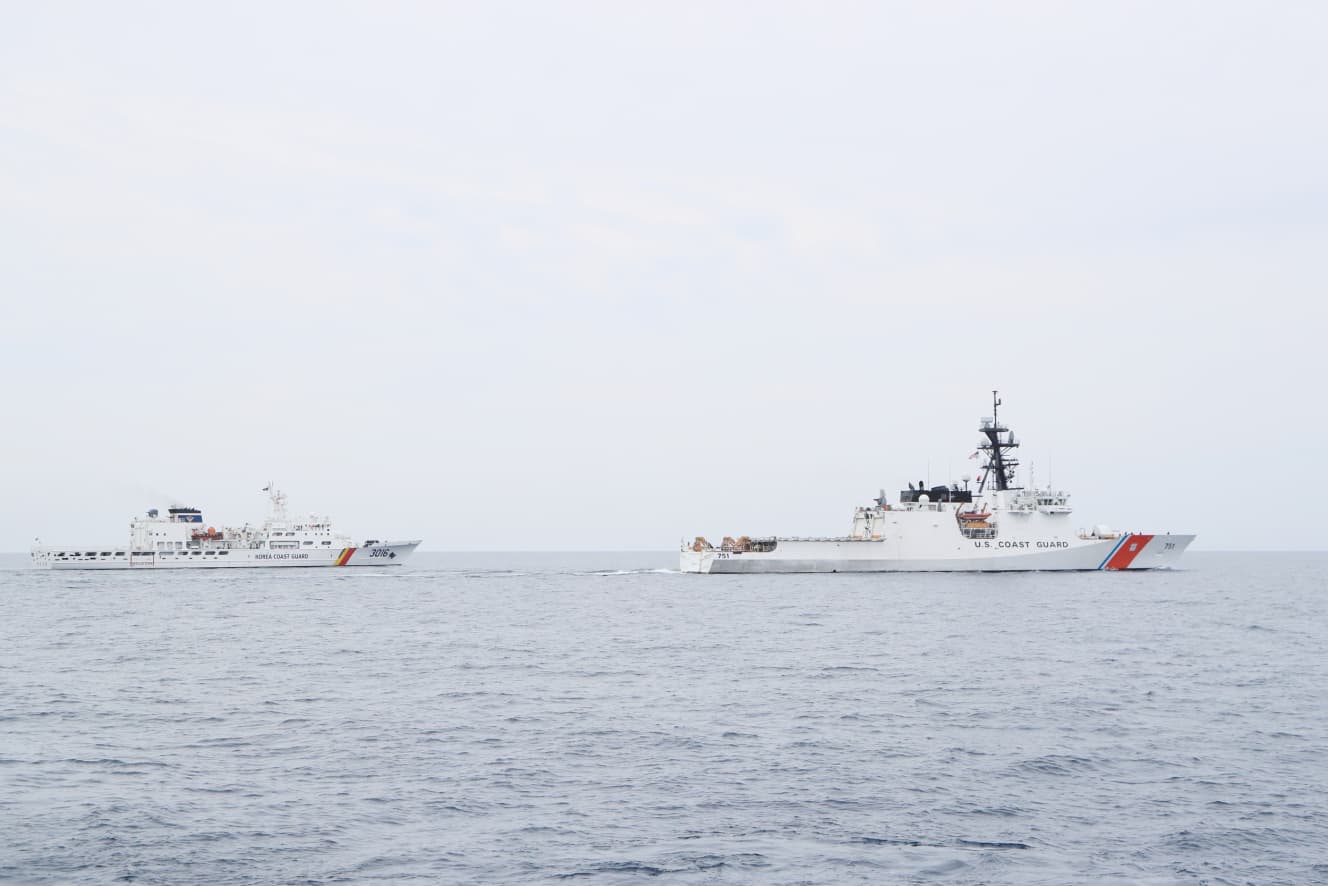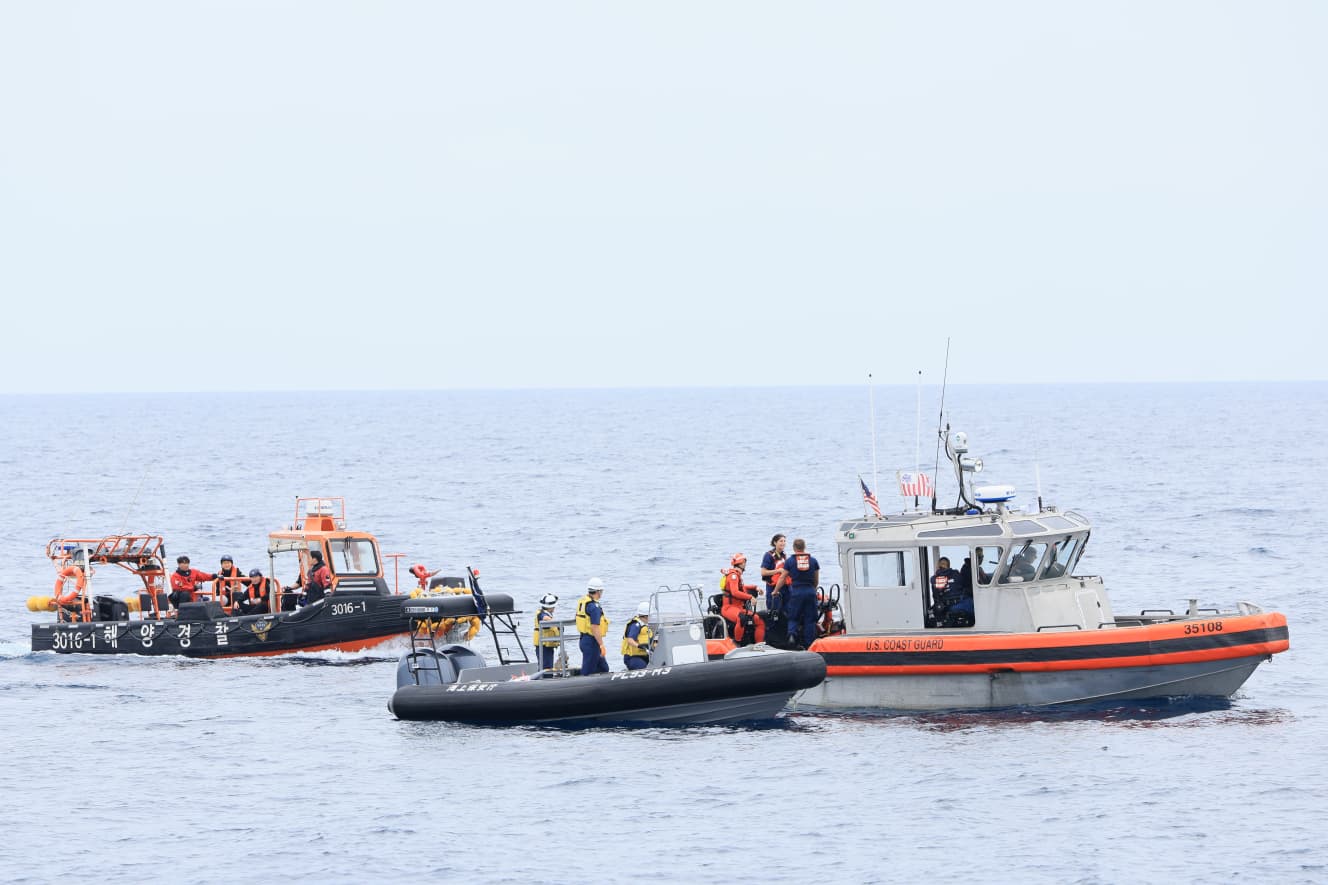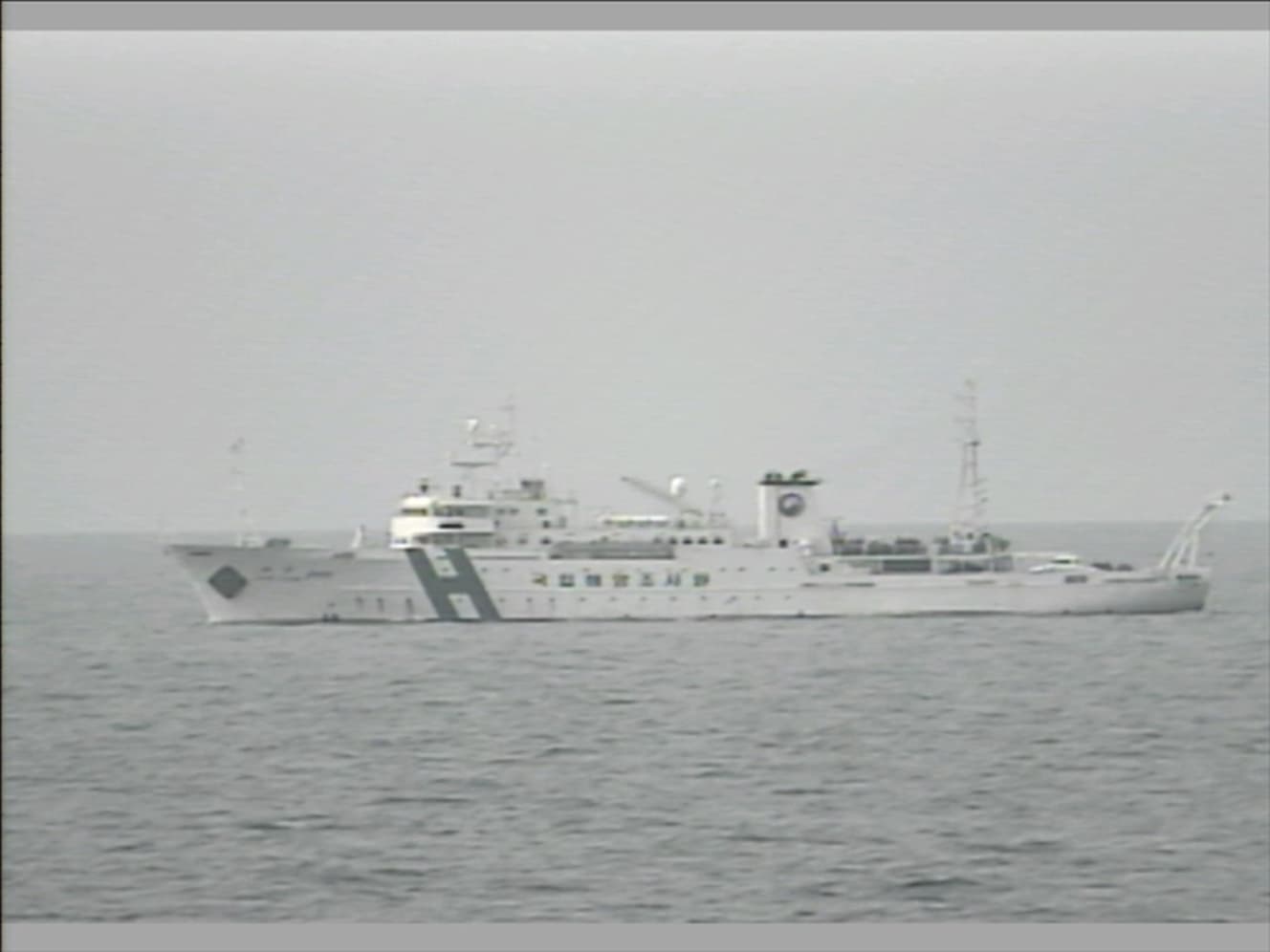Japan-U.S.-South Korea “First” Joint Rescue Drill Double standard of South Korea, which conducts a marine survey in Japan’s EEZ on the same day without hesitation

On June 6, 2012, a Japan-U.S.-Korea joint rescue drill was held in the northern waters of the Tango Peninsula in Maizuru, Kyoto Prefecture. This was the first time in history that the coast guard agencies of these three countries held such a drill.
The training exercise was the first ever held by the three countries’ coast guard agencies. The Japanese patrol vessel Wakasa belonging to the Japan Coast Guard’s 8th Regional Coast Guard Headquarters, the US Coast Guard (USCG) patrol vessel WAESCHE from the United States, and the Korean Coast Guard (KCG) patrol vessel Pacific 16 from South Korea participated in the exercise.
This exercise follows the signing of the Letter of Intent on Cooperation of Maritime Security Agencies in May of this year. The training exercise is based on the agreement that the three countries will take various actions to protect peace and stability in the Asia-Pacific region.
The exercise was conducted under the assumption that two cargo ships, one of South Korean registry and the other of U.S. registry, collided in Japanese waters. The Korean-flagged vessel caught fire, 10 people jumped into the sea, 16 people escaped in life rafts, and the U.S.-flagged vessel was in a navigable state of damage. A Korean cargo ship notified the National Maritime Police Agency, which then requested assistance from Japanese and American patrol vessels that happened to be in the vicinity.
After arriving at the training area, the patrol vessels of each country set their own search area and searched for 10 maritime drifters (dummy dolls) and a life raft. In addition to the patrol vessels, small boats carried by each country and the onboard helicopter from the U.S. patrol vessel WAESCHE were also utilized for search, rescue, and firefighting activities.
The patrol vessels of each of the three countries were manned by high-ranking officials from each of the three countries, who actively observed the drills. On board the “Wakasa,” the officials from each country were actively engaged in discussions.
After the drill, Ayumi Murakami, Chief of the Rescue Division of the 8th Regional Coast Guard Headquarters, said at a press conference , “I am relieved that the drill was completed safely and without incident. We were able to strengthen cooperation among the three countries. I was reminded of the importance of communication in drills conducted in cooperation with foreign organizations.
The mood was one of unity as the three countries prepared to respond to the maritime expansion of China, Russia, and other nations, but on June 7, news came to light. At around 5:00 a.m. on the morning of June 6, the day of the drill, a South Korean oceanographic research vessel was conducting an unannounced oceanographic survey in Japan’s Exclusive Economic Zone (EEZ) south of Takeshima.
The patrol vessel belonging to the 8th Regional Coast Guard Headquarters, which conducted the exercise with the South Korean vessel, discovered the survey and radioed a request to cease the survey.
The Korean vessel was a “HAEYANG 2000” belonging to the National Oceanic and Atmospheric Research Institute. It was observed that a wire was being put into the sea. The vessel had conducted unauthorized surveys in Japan’s EEZ many times in the past, including in 2010.
The double standard of the ROK, which would not hesitate to interfere with a day when Japan, the U.S., and the ROK united to conduct joint training exercises, is nothing short of appalling.




Photography, Reporting, and Writing: Takuma Arimura PHOTO: Courtesy of the 8th Regional Coast Guard Headquarters (5th photo)